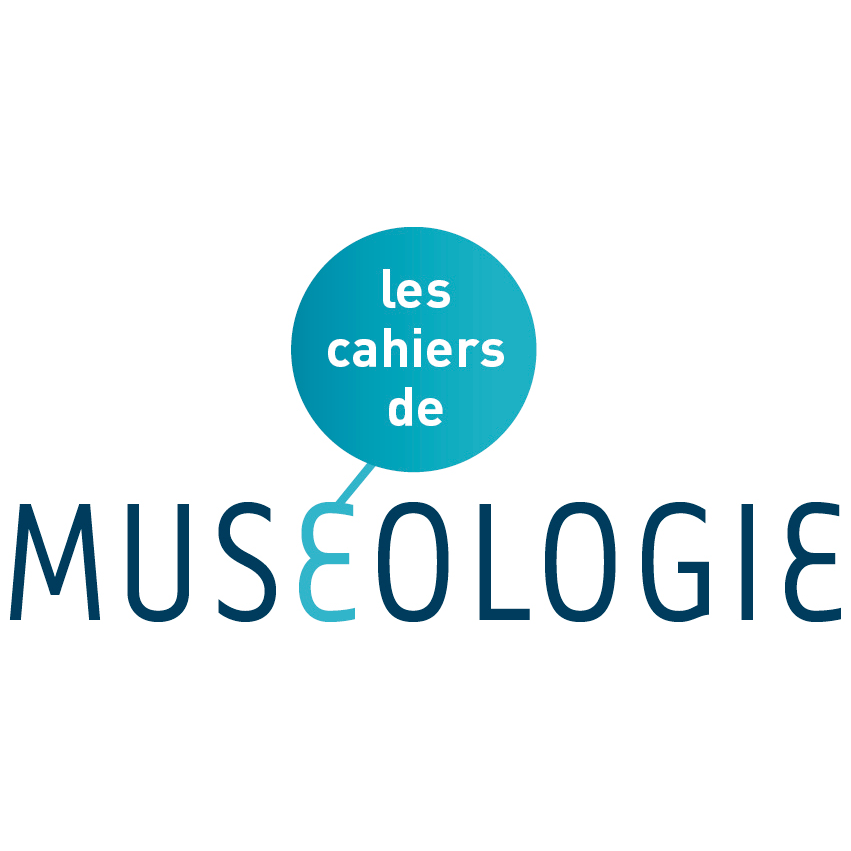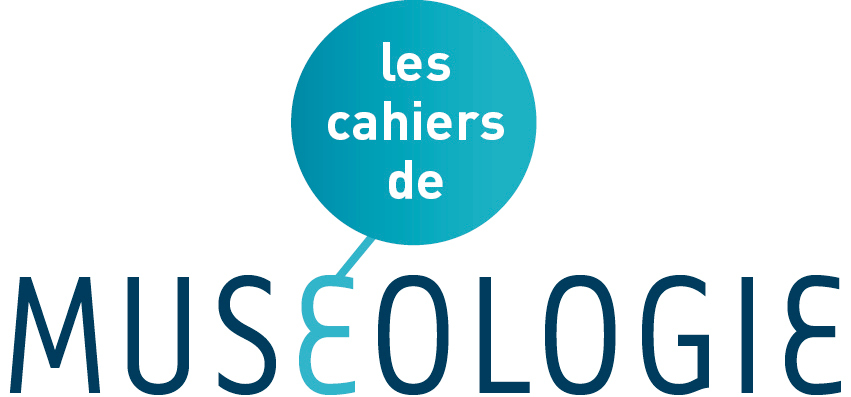- Home
- Numéro 2
- Dans la marge
- Sociomuseology and Contemporary Art: Convergences. Cosmopolis – a case study
View(s): 794 (0 ULiège)
Download(s): 46 (1 ULiège)
Sociomuseology and Contemporary Art: Convergences. Cosmopolis – a case study

Attached document(s)
original pdf file1Material culture museums and their collections – natural history, ethnology, science – are the main actors in the debate about the necessity to reform museologic discourse and display, in order to reinscribe their historic legacy into a new, inclusive paradigm. The question this article poses is what is the role of art museums in this context? It forwards a series of proposals formulated in the context of an ongoing contemporary art project embedded at Centre Pompidou, Paris in 2017-2019, Cosmopolis, curated by Kathryn Weir, director of the department for cultural development.
2
3Situating a project and research-based contemporary art platform in the context of Centre Pompidou, Cosmopolis affirmed an innovative proposition, extrapolating the "art museum" profile of the institution dedicated to display of modern and contemporary art, with a social dimension based on production. The 2017 and 2019 editions in Paris and 2018 in Chengdu, China problematised "collectivity, inclusive urbanism, social value, humanism in the context of urban communities, but also artificial and ecological intelligence, technology and the commons. The mission set was envisioning how we may draw on intelligent technologies and ecological intelligence to advance social values—rather than leaving capital to define the uses of techniques and knowledge systems" (Cosmopolis 2019 press release). Cosmopolis functioned as a hub for recent thinking, theory and practice, but also drawing information from Centre Pompidou's archive and collections and exploring the history of Extra-European cultural presence in Paris. Cosmopolis #1 and #2 took place in Gallery 3 at Centre Pompidou and were constituted by a series of installations, each of them "curated" by another interdisciplinary collective of artists, activist and researchers, while Cosmopolis #1.5 took place 2018 in Chengdu, China.
4
5This article aims to crystallize innovative methodologies this project introduced and launch the proposal that concrete solutions can emerge from the field of contemporary art, which can be further applied to other branches of material culture museology. Developed during many months preceding the exhibition and during the exhibition time in collaboration with the audience, the projects were based on fieldwork and research, collective activities and intervention in the social space in and around Paris, developing micro-possibilities for self-governance.
6
7Architectura Expandida (Bogotá) introduced in Clichy-sur-Bois communitarian furniture towards social cohesion and integration. By finding the fissures in the legal and administrative system, they changed it through small interventions that were not always legal, but also not forbidden.
8
9Ruangrupa collective from Jakarta connected with the Indonesian Diaspora in Paris and the history of Indonesian artistic avant-garde. They couldn't find Indonesian artworks in the Pompidou collection, but only secondary information in the Centre's archives. For mapping Indonesian presence and culture in Paris, interviews with Indonesian personalities where publicly conducted in the group's installation at the Centre Pompidou during exhibition time, which became a "site" to work and uncover stories of their community members.
10
11Por Estos dias from Medelin, Colombia, create pirate issues of well-known magazines, in which original texts were augmented by workshop participants with critical political, social or aesthetic input related to euro-centric histories propagated in media.
12
13Laagencia (Bogotá) developed Escuela Garagem – a dialogic construction of content related to universally relevant historic episodes by posing and answering together questions.
14
15Cosmopolis #2 set the accent on technological questions and their relation to social value. In her introductory word Kathryn Weir states: "In today’s discussion of the post-human, artists remind us that most humans have been excluded from 'universal' formulations of the idea of Humanity. The European Renaissance fashioned 'Man' to the exclusion of women and non-Christians, the latter defined through the invented paradigm of 'lesser races'. By the 18th century, these formulations were integral to a 'civilizing' ideology that linked the idea of 'progress' to technology’s capacity to improve living conditions. European conceptions of the human were promoted within régimes of expropriation of resources, labour and reproductivity. Cosmopolis #2 presents constellations of works around alternative ontologies […] against the prevailing planetary system’s mainstream, experimenting with alternative futures beyond neoliberal individualism" (Cosmopolis 2019).
16
17How is the institution museum – even if on a temporary basis – turned into a mechanism that enables intervention outside of its parameters? Cosmopolis questioned the auctorial status of artistic production and offered answers in urban neighbourhoods by introducing social equipments, food infrastructures, access to historic archives and micro-scale solutions for self-governing and inclusive communities.
18
19Cosmopolis echoes the objectives set by sociomuseology (launched 1985 at the MINOM meeting Lisbon) which declares the museum as a site for social intervention. It provides the path for dialogical research, the elaboration of a decolonial pedagogy and to a participatory curating (Primo & Moutinho 2020, 2021). As Judite Primo and Mario Moutinho affirm across various writings, Sociomuseology represents an Insurgent Museology at the service of a critical pedagogy that develops the imagination and the wisdom of linking knowledge to freedom of expression. It is concerned for inclusive historical narratives and interactive heritage (Primo & Moutinho 2020, 2021). It searches to de-construct singular criteria of classification of collections, euro-centric narratives, and the transmission of certitudes.
20
21Situated in the context of an art institution dedicated to display and preservation mainly of the Euro-American modernist artistic legacy, Cosmopolis is concerned with the Extra-European context and with rethinking the heritage of the complex relations between the European and Extra-European cultures. Recent museologic debate advocates that museums should turn into sites of communitarian, multicultural encounters, building social cohesion, counteracting social exclusion, and propagation of racism, with a dialogical education based on accessibility and human rights (Primo & Moutinho 2020; Dahlgren & Hermes 2020, p. 117-138). Contemporary art that re-enacts heritage (Knudsen & Kølvraa 2021) demonstrates its efficiency in offering not only expression of people’s knowledge and memories for stimulating interaction and participation (Message 2009, Macdonald 2015, Baker 2020) but as shown by Cosmopolis, also for providing a creative and innovating institutional critique.
22
23Some action lines practised during Cosmopolis can be crystallized which contributed to the formulation of new working methodologies regarding cultural heritage and situating it into the social present.
24
Contextual Object History
25In the framework of the project, contextual object histories were drawn by revealing the relation between historic material (found by invited artists into the archive of Centre Pompidou or other archives) and other current political questions related to it, while confronting museology with dissonant heritage ( a term introduced by Tunbridge & Ashworth 1997) and connected to colonial history and Eurocentrism. The project was also promoting a plural, intersectional approach to history (Primo & Moutinho 2022, p.94) – that reveals how various voices and subjectivities overlap.
26
De-Colonial Representation
27The project also proposes tools for de-colonial representation by including formerly marginalised voices (interviews, statements) into the creation of the work of art, without reiterating a position of power (Knudsen & Kølvraa 2021, p. 4 and 19) and cultural hegemony (Foster 1995, p. 304). It aimed to disclosing aspects of Eurocentrism and discrimination in particular historic narratives and of considering archival material on Extra-European heritage in European institutions and revealing political instrumentations of objects (Witcomb & Message 2020, p. 28). Reflecting through the production and display of artistic actions and products on institutional critique and analysis, it was stimulating alternative models of institutional and aesthetic production and accepting the role of the public as constituent for the production of the "work". (Papastergiadis 2018)
28
29When asked in 2017 where are the most relevant discussions situated today, the Argentinian thinker Walter Mignolo (Mignolo 2017, part 1) affirms that they are in the context of "creative thinking and doing (publications, exhibits, artists, organizations, web networks) coming from the non-European regions and from immigrants in Western Europe and the US. […] Decoloniality is epistemic restitution (as well as reconstitutions, re-emergence, resurgence, re-existence) of ways of thinking, languages, ways of life and being in the world that the rhetoric of modernity disavowed" (Mignolo 2017, part 2). Mignolo introduced the term "de-colonial aesthetics": a deconstruction of the Western aesthetics which imposed a canon of the beautiful and the sublime, a universal taste which justified an important part of the Western "civilizing mission".
30
31Mignolo extrapolated the term aesthetics into "decolonial aesthesis" that goes beyond art—aesthesis (sensing) is in everything we do (Mignolo 2017, part 1). The function he assigns to de-colonial aesthesis is to heal the colonial wound. It is for him also a tool in the long and personal process of escaping from mental slavery (through what he calls 'delinking'), through valuing the communal rather than the individual, conviviality rather than individual success, slow motion rather than the speed to be the first (Mignolo 2017, part 1). Walter Mignolo was a key figure of Cosmopolis, his thinking reverberating in its mission, but also as a guest of Cosmopolis #1 at Centre Pompidou on December 2017 with his lecture: (De) Coloniality and the era of the Anthropos.
32
Bibliographie
Baker Janice, 2017: Sentient Relics: Museums and Cinematic Affect, New York, Routledge.
Cosmopolis [online], available on: https://Cosmopolis.centrepompidou.fr/.
Dahlgren Peter & Hermes Joke, 2020: « The Democratic Horizons of the Museum », in Witcomb Andrea & Message Kylie (éds.), Museum Theory, West Sussex, Wiley Blackwell, p. 117-138.
Foster, Hal, 1995: « The Artist as Ethnographer? », in Marcus George & Fred Myers, The traffic in culture : refiguring art and anthropology, Berkeley, University of California Press, p. 302-309.
Macdonald Sharon, 2015: The Trouble with the Ethnological in Museum Experiments, Berlin, Nicolai.
Message Kylie, 2009: « Museums in the Twenty-first Century », Konsthistorik Tidsskrift, vol. 4, n° 78, p. 204-221.
Mignolo Walter & Hoffmann Alvina, 2017: « Interview – Walter Mignolo: Key Concepts (part 1 and 2) », E-International Relations [online], 21 January. Available on:
https://www.e-ir.info/2017/01/21/interview-walter-mignolopart-2-key-concepts.
Mignolo Walter, 2017: Coloniality and the era of the Anthropos (the Anthropocene) [conference], Paris, Centre Pompidou. Disponible sur : https://www.youtube.com/watch?v=yMzaEJD9huM.
Papastergiadis Nikos, 2018: « From Cosmopolis to Cosmopolitan Spaces », E-Flux Architecture [online]. Disponible sur : http://www.e-flux.com/architecture/urban-village/169806/from-Cosmopolis-to-cosmopolitan-spaces/.
Primo Judite & Moutinho Mario, 2020: Introdução à Sociomuseologia, Lisboa, Edições Lusófonas, p. 558.
Primo Judite & Moutinho Mario, 2021: Teoria e Prática da Sociomuseologia, Lisboa, Edições Lusófonas.
Primo Judite & Moutinho Mario, 2022: « Acervos coloniais », Boletim Icom Portugal, n° 17, Série III (2021).
Tunbridge John & Ashworth Gregory 1997: Dissonant heritage: The management of the past as a resource in conflict, Belhaven, Belhaven Press.
Verges Françoise, 2016: « The Slave at the Louvre », Nka, n° 38-39, p. 8-13.
Weir Kathryn (director for cultural innovation at Centre Pompidou), January 2018: interview conducted by Jecu Marta, Paris.
Witcomb Andrea & Message Kylie, 2020: Museum Theory, West Sussex, Wiley Blackwell.






